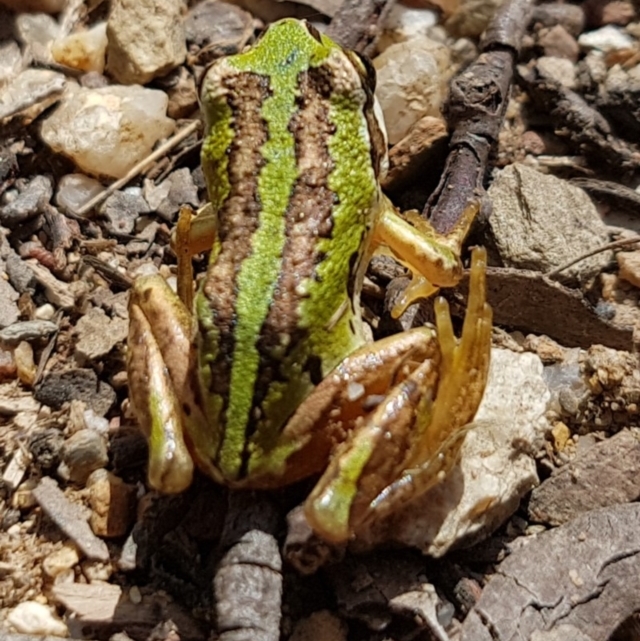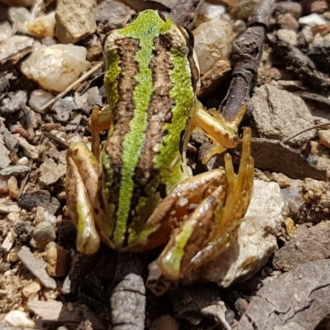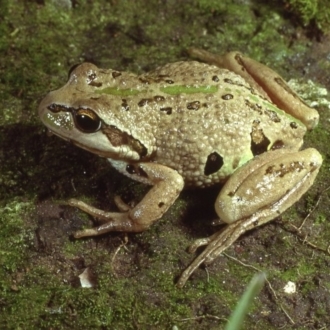Litoria verreauxii alpina (Alpine Tree-frog)
Distribution: Highly localised in alpine regions.
Current conservation status: Vulnerable in NSW due to its decline. Chytrid fungus is believed to be partly responsible for the decline of this subspecies. (Wikipedia).
Family: Hylidae
Appearance: Alpine Tree-frog (L. v. alpina) is mostly green on the dorsal surface with two brown bands running parallel to each other down the back. These bands start at the eye and are separated by a narrow band of green. The thighs and backs of the legs are red with small black spots, with some larger black spots present on the fronts of the thighs. The belly is white.
Length: 30 to 35mm.
Breeding: Males commence calling in May or June, when winter rains have filled the farm dams and other breeding pools, and if weather remains moist, breed through until October or November.
Habitat: The alpine tree frog inhabits alpine ponds and pools of creeks in moorland, alpine forest and partly cleared land.
Distribution: The species may occur in alpine areas of ACT as it is highly localised in alpine regions.
Biology: Males have a similar call as Litoria verreauxii verreauxii and call from areas close to the breeding sites during spring and summer.
Call: Similar to the call of L.v. verreauxii but slower and less whistling, "cree...cree...cree...cree...cree...".
Litoria verreauxii alpina is listed in the following regions:
Canberra & Southern Tablelands | Southern Highlands | Albury, Wodonga | South Coast | Greater Sydney | Hunter Region | Central West NSW | Riverina Murray | New England | Far West New South Wales | New South Wales North Coast
Species information
- Litoria verreauxii alpina Scientific name
- Alpine Tree-frog Common name
- Sensitive
- Very rare / threatened
- Non-Invasive
- Machine learning
Follow Litoria verreauxii alpina
Receive alerts of new sightings
Subscribe
















